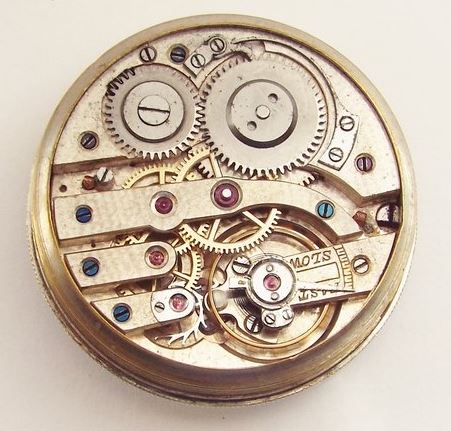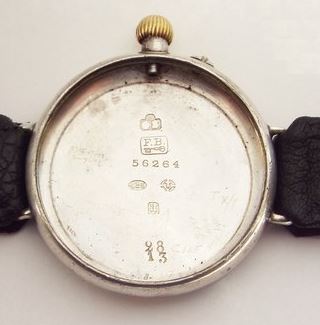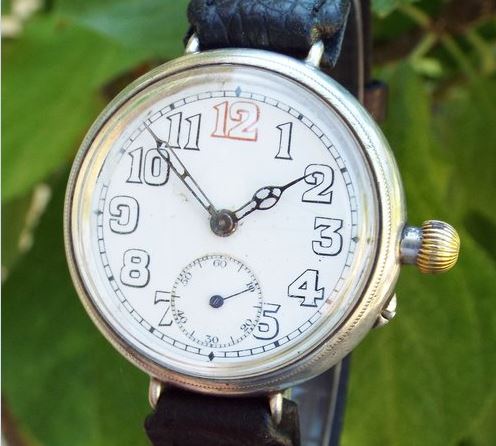Last updated on July 3, 2024
The more I learn about antique watches the longer my wish list gets. The latest addition to the list has to be what is known as a Borgel officers watch or a Borgel trench watch. These watches became famous during the First World War, not necessarily for the movements inside, but for the water and dust-resistant Borgel cases.
Movement
This antique watch, which was already sold when I found it, is a fine example of a Borgel trench watch. It’s a gentleman’s silver trench watch, hallmarked for 1916. The watch has a hand-winding pin-set movement which is working to within 3 minutes of accuracy per day. It has an unsigned Fabrique d’Horlogerie de Fontainemelon (FHF) movement. FHF specialised in producing ébauche movements. This one is of particularly good quality as it has 17-jewels.
The watch measures 35mm in diameter excluding the winding crown and the fixed wire lugs. It’s a nice size for a trench watch, many are several millimetres smaller in diameter. It would certainly pass as a wearable dress watch. The case is silver and there are hallmarks inside the case back for London (import mark), 1916, together with the sponsor’s mark for George Stockwell. There is also a case maker’s mark for François Borgel (FB).

François Borgel
Borgel patented the Borgel watch case in 1891. At the time, it was a real step forward in the design and manufacture of waterproof and dustproof watch cases. Early adopters of the Borgel screw case included Longines and IWC. François Borgel died in 1912, but the business was taken over by his daughter, Louisa. Initially, the cases were made for pocket watches. When the First World War started it soon became obvious that pocket watches were not suitable for battle in the trenches. As a result, the trench watch was born. Borgel soon began making cases specifically for trench watches.
Waterproof case
The Borgel case was innovative for the time and a genuine attempt at making a waterproof watch case. I don’t imagine it would ever be useable as a dive watch. However, I have read numerous anecdotes attesting to the ruggedness and water resistance of the cases. Stories include watches being submerged in rivers for days and going through washing machines without any water penetration. The Borgel cases swiftly gained popularity in the trenches and were highly sought after.

Overall, the case is in good condition. There is some minor surface marking to the back from a previous strap, but nothing serious. The case is over a hundred years old and should under no circumstances be considered waterproof as the screw thread is undoubtedly worn after a century of use.
Dial
The acrylic lens is in good condition. The dial has a couple of faint hairline cracks and an old repair to the outer edge. However, overall it has survived well for a World War 1 timepiece. Originally, there would have been luminous radium paint applied to the cathedral hands to allow the soldiers to tell the time in the dark. There are a few traces of paint left, but has mostly gone which is good considering it would still be radioactive.

The Borgel case has such a distinctive look with its protruding crown and it has a strong reputation from the men on the WW1 battlefields. A trench watch with a quality movement and a Borgel case is a must for any antique watch collector. I hope that I can get my hands on one soon.

I recently purchased a ww1 wrist watch, I was told recently it was likely for a female, hallmark is London original watch strap, patent applied for, working it was serviced in 1963 and signed by the person who serviced it, but would like to know if it was from that era
Hi John, trench watches are typically 35mm or less in diameter, which is quite small for a modern wristwatch and therefore closer to the size worn by modern ladies. If you can send me photos of the dial, movement and hallmarks I would be happy to give my opinion. A measurement of the watch diameter would also be useful. If your wristwatch dates to the WW1 period, it is most likely a men’s trench watch. Thanks, Jason